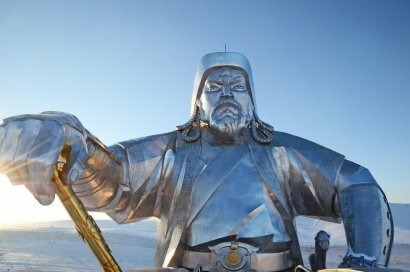100 Examples of Atoms
Miscellanea / / July 04, 2021
With the name of atom the minimum unit that forms the matter and that still has the properties of chemical element to which it belongs. For example: aluminum, iron, iodine. The atom is the base particle of all known matter and is present in all things: in living beings and in inanimate objects.
The atom is often characterized as a indivisible unit, but it is not because of the impossibility of the atom being divided, but in the case of being divided it would lose chemical properties of the chemical element to which it belongs: the atom, in reality, is made up of even smaller particles: the subatomic ones.
Atom composition
Indeed, the atom composition includes a center composed of a nucleus containing protons and neutrons, and several layers or levels of energy around this nucleus that feature the smallest subatomic particles of atoms, the electrons.
While the electrons have a negative charge, protons have the same electric charge but positive and the neutrons they have no charge. Rutherford proposed one of the atomic models that explains the existence of positive charges in the nucleus of the atom and negative charges located in the orbits around it. Through this model it was possible to explain (although with some limitations) the union of atoms to form
chemical compounds.Atom properties
The atom always has some properties, which are useful to understand the way in which they are distributed when they form the different chemical compounds. The atom always has an atomic number (represented by the letter Z) that represents the number of protons contained in the nucleus, which is equal to that of electrons, which are at its around. It also has a mass number, represented by the letter A, which refers to the sum of protons and neutrons that the atom contains in its nucleus.
Classification of atoms
There are different classes of chemical elements. The most common classification is the one carried out in the periodic table of the elements, which organizes and classifies chemical elements according to their atomic number, among other properties.
All atoms with the same atomic number they belong to the same chemical element. On the other hand, atoms that have different amounts of neutrons but equal numbers of protons (atomic number) are called isotopes. For example, hydrogen has three isotopes natural atoms: protium 1H (with a proton in the nucleus and an electron in its orbit), deuterium 2H (with a proton and a neutron in the nucleus, and an electron in its orbit) and tritium 3H (with one proton and two neutrons in the nucleus, and one electron in its orbit). But all three isotopes belong to the same chemical element, hydrogen.
History of Atomic Theory
The atomic theory, which includes atoms as the minimum unit of the structure of matter, has existed since Ancient Greece.
In 1803, John dalton he proposed the atomic model that demonstrated that the union between the atoms to form chemical compounds was carried out through certain defined proportions of each one. John Thomson, for his part, determined the positive and negative charge and the conformation of the ions of both signs. The next to propose an atomic model was Rutherford, who for the first time defined the positive atomic nucleus and the orbits where the electrons are located. Then, Bohr proposed a model that states that electrons are not located in all orbits or energy levels, but that there are allowed and prohibited energy levels.
The models followed one another until the current studies of the Quantum theory, mainly oriented to the fields. Obviously, it is certain that the structure of the atomic nucleus and of the particles that make it up is much more complicated than the traditional electronic structure of atoms.
Examples of atoms
Here is a list of examples of chemical elements in the periodic table, for which there are a certain number of atoms that make up their isotopes:
| Actinium (Ac) | Fluorine (F) | Lead (Pb) |
| Aluminum (Al) | Phosphorus (P) | Plutonium (Pu) |
| Americio (Am) | Francio (Fr) | Polonium (Po) |
| Antimony (Sb) | Gadolinium (Gd) | Potassium (K) |
| Argon (Ar) | Gallium (Ga) | Praseodymium (Pr) |
| Arsenic (As) | Germanium (Ge) | Promethium (Pm) |
| Astato (At) | Hafnium (Hf) | Protactinium (Pa) |
| Sulfur (S) | Hassio (Hs) | Radius (Ra) |
| Barium (Ba) | Helium (He) | Radon (Rn) |
| Beryllium (Be) | Hydrogen (H) | Rhenium (Re) |
| Berkelium (Bk) | Iron (Fe) | Rhodium (Rh) |
| Bismuth (Bi) | Holmium (Ho) | Roentgenio (Rg) |
| Bohrio (Bh) | Indian (In) | Rubidium (Rb) |
| Boron (B) | Iridium (Go) | Ruthenium (Ru) |
| Bromine (Br) | Krypton (Kr) | Rutherfordio (Rf) |
| Cadmium (Cd) | Lanthanum (The) | Samarium (Sm) |
| Calcium (Ca) | Lawrencio (Lr) | Seaborgio (Sg) |
| Californium (Cf) | Lithium (Li) | Selenium (Se) |
| Carbon (C) | Livermorio (Lv) | Silicon (Si) |
| Cerium (Ce) | Lutetium (Lu) | Sodium (Na) |
| Cesium (Cs) | Magnesium (Mg) | Thallium (Tl) |
| Zinc (Zn) | Manganese (Mn) | Tantalum (Ta) |
| Zirconium (Zr) | Meitnerium (Mt) | Technetium (Tc) |
| Chlorine (Cl) | Mendelevium (Md) | Tellurium (Te) |
| Cobalt (Co) | Mercury (Hg) | Terbium (Tb) |
| Copper (Cu) | Molybdenum (Mo) | Titanium (Ti) |
| Copernicium (Cn) | Neodymium (Nd) | Thorium (Th) |
| Chromium (Cr) | Neon (Ne) | Thulium (Tm) |
| Curium (Cm) | Neptunium (Np) | Oganeson (Og) |
| Darmstadtium (Ds) | Niobium (Nb) | Moscovio (Mc) |
| Dysprosium (Dy) | Nickel (Ni) | Tenese (Ts) |
| Dubnium (Db) | Nitrogen (N) | Nihonium (Nh) |
| Einsteinium (Es) | Nobelio (No) | Uranium (U) |
| Erbium (Er) | Gold (Au) | Vanadium (V) |
| Scandium (Sc) | Osmium (Os) | Tungsten (W) |
| Tin (Sn) | Oxygen (O) | Xenon (Xe) |
| Strontium (Sr) | Palladium (Pd) | Iodine (I) |
| Europium (Eu) | Silver (Ag) | Ytterbium (Yb) |
| Fermium (Fm) | Platinum (Pt) | Ytrio (Y) |
| Flerovio (Fl) |
Follow with:



